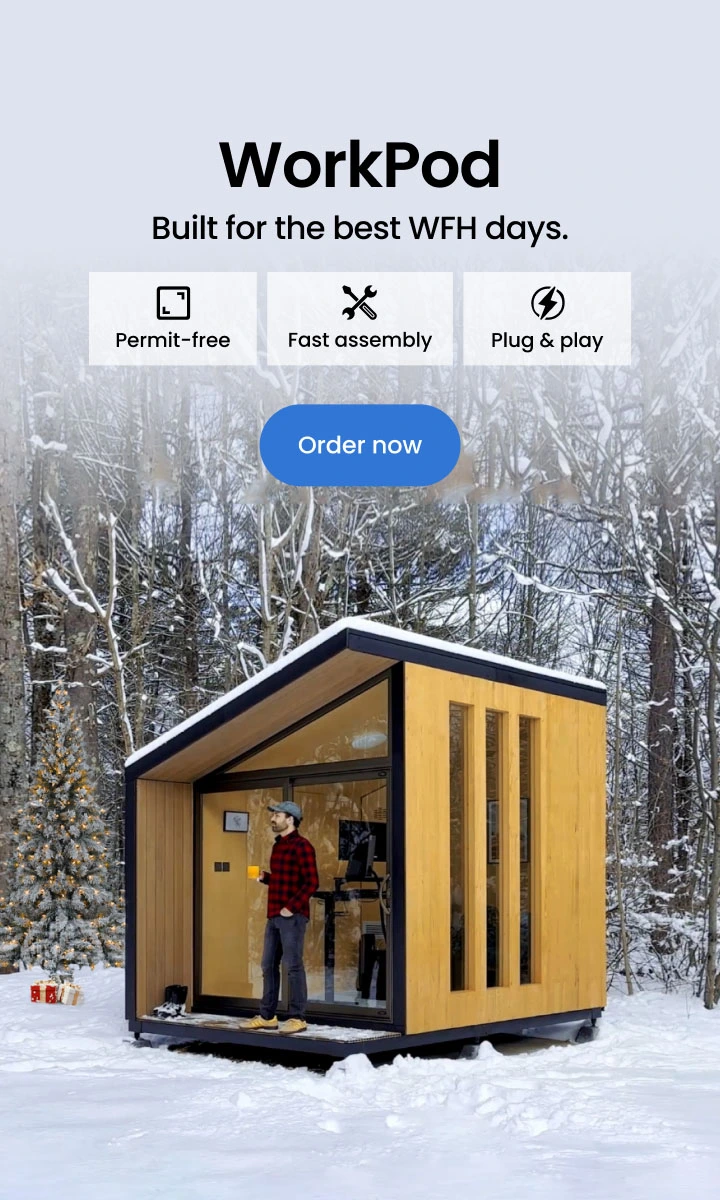
What is A Modular Building and How Can It Be Green?
The construction industry has experienced a significant transformation in recent years, and one of the most notable changes is the rise of modular buildings.
Modular building is a modern construction approach that involves assembling pre-built modules at the site, which are then interconnected to create a building. The result is a highly efficient and sustainable building that can be customized to meet specific needs.
Prefab Modular Building: An Overview and Benefits
When time and money are of the essence, many people turn to prefab construction. Prefabricated modular buildings may be constructed more rapidly than conventional buildings, making them a popular choice for time-sensitive projects.
Better quality control, less waste and shorter construction time frames are just a few of the advantages of modular building construction over conventional techniques. Additionally, modular building design permits a high level of customization, making it an excellent choice for those seeking a one-of-a-kind structure.
Modular construction has a lot of eco-friendly advantages. Construction sites may have less of an effect on the environment when modular building is used. A few examples of the eco-friendliness of modular construction are as follows:
Designing a Green Modular Building
Modular building design is an essential aspect of creating a sustainable building. Sustainable design involves selecting materials that are environmentally friendly and energy-efficient. For example, selecting materials with high recycled content reduces pollution.
In addition, sustainable design considers the life cycle of the building, and this means selecting durable materials that require minimal maintenance, reducing the need for replacement over time. Sustainable design also considers the energy needs of the building, selecting materials and systems that reduce pollution.
Sustainable Materials for Modular Building Construction
The materials chosen to create a modular structure may have a major effect on the building's carbon footprint. Materials with negligible environmental impact, such as renewable resources and recycled content, are considered sustainable.
Bamboo is often utilized as a sustainable material in modular building construction. Since bamboo is a fast-growing, renewable resource, it can be used in place of wood in construction. The strong strength-to-weight ratio of bamboo makes it a great material for prefabricated modular structures.
Recycled steel is another eco-friendly material utilized in modular building construction. With its high recycled content and long lifespan, recycled steel is also a great material for modular building construction. Steel is also adaptable and simple to shape according to specific requirements in design.
Energy Efficiency in Modular Building Design
The modular building design also considers the energy needs of the building, and this includes selecting materials and systems that lower energy usage and improve energy efficiency.
Passive solar design is one way to improve energy efficiency in modular building design. Passive solar design involves orienting the building to maximize natural light and heat, reducing the need for artificial lighting and heating. Additionally, selecting materials with high thermal mass, such as concrete, can help regulate temperature and reduce energy wastage.
Modular Office Building: Features and Advantages
The use of modular office buildings to construct eco-friendly workplaces is gaining popularity because they can be tailored to individual requirements and come in a variety of forms. Efficient construction of these buildings makes it possible to lessen the negative environmental effects of development.
Such office structures are useful because of their adaptability. The flexibility of modular offices makes them a good investment for companies (especially small scale ones which are just starting out). As an added bonus, they can be constructed with eco-friendly elements like passive solar design, green roofs and rainwater collection systems.
Affordable Housing: Cheap Modular Homes
Affordable prefab homes are an affordable housing option that can help reduce the impact of global pollution due to construction. Modular homes are highly customizable and can be designed to meet specific needs. Modular houses also have a less carbon footprint because of how quickly and easily they can be built.
The low cost is one of the many benefits of these modular dwellings. Modular homes are a great choice for individuals on a tighter budget since they cost much less than site-built houses. Also, homeowners can tailor a modular home to their unique requirements with a wide range of design options.
Innovative Uses of Modular Buildings
Modular buildings have a range of applications, including office sheds and modern sheds. These sheds are compact, self-contained structures that may be utilized as a home office, studio or guest house, as well as a workshop, art studio, or storage space.
These small sheds are highly customizable and can be built with environmentally friendly features like passive solar design, green roofs and rainwater harvesting.
Wood Sheds: A Sustainable Solution for Modular Construction
Wood sheds are another sustainable option for modular construction. Wood is a renewable resource that has been used in construction for centuries due to its high thermal mass which makes it an excellent option for regulating temperature and reducing energy consumption.
One of the advantages of wooden sheds is their versatility. Wood can be easily customized to meet specific design requirements, allowing for high customization.
Prefabricated ADUs: The Future of Sustainable Living
Prefab ADU (Accessory Dwelling Units) is an innovative and sustainable solution for those looking to create additional living space on their property. ADUs are small modular buildings designed for various purposes, including rental units, guest houses, and home offices.
ADUs offer several benefits over traditional construction methods, including reduced construction time and waste. In addition, ADUs can be designed to incorporate sustainable features such as solar panels, green roofs, and rainwater harvesting.
Conclusion
The modular building offers several advantages for a greener future. Modular building construction is highly efficient, reducing the harmful effects of construction. Moreover; modular building design allows for a high degree of customization, making it an ideal option for those looking for a unique building.
Sustainable materials, energy efficiency, and innovative uses of modular buildings are just a few ways a modular building can be green. Whether a modular office building, affordable housing, or a prefabricated ADU, it offers a sustainable and cost-effective solution for those seeking additional space. Get yours now and experience the amazing benefits they offer.
Spread the word
.svg)







